Morphological Classification of Bacteria: As per the morphological basis, bacteria are classified into six major groups which are depicted as follows:

Morphological Classification of Bacteria:
Table of Contents
1. True bacteria:
They are a major group of classification which is further divided into two sub-groups namely Cocci and Bacilli. Cocci are of various types. Like Mono cocci (single cocci): Monococcus species, Diplococci (Cocci in pairs): Streptococcus pneumonia, Staphylococci (Cocci in a bunch form): Staphylococcus aureus, Streptococci (Cocci in chain form): Streptococcus pyogenes, Tetrad (Cocci in the group in four): Micrococcus species, Sarcina (Cocci in the group in eight, cube-like): Sarcina ventriculi (Fig.1).
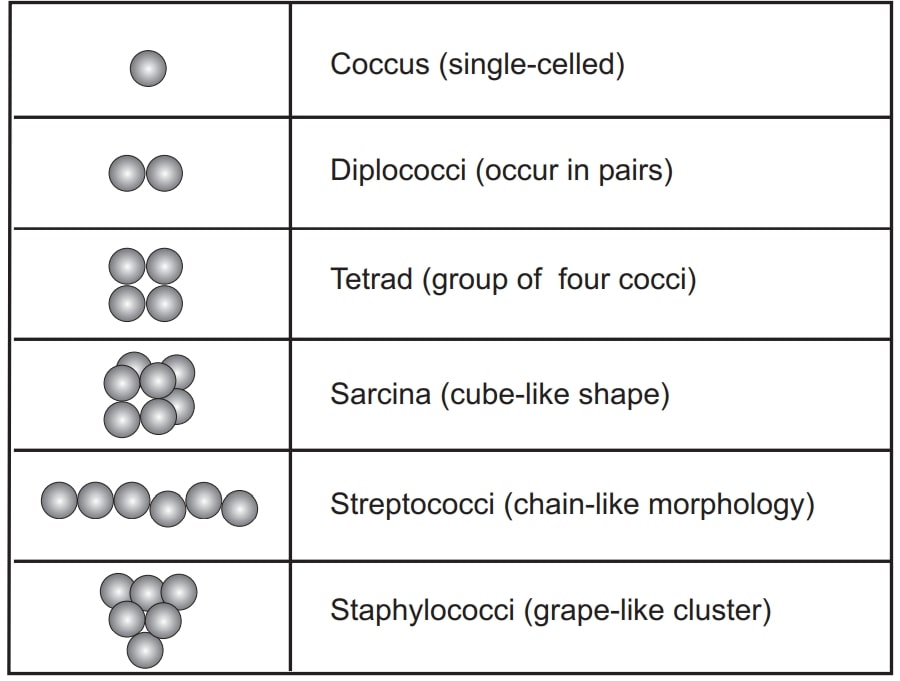
Thereafter, Bacilli, which are rod-like structures based on the arrangement of organisms they are classified into Diplobacilli (Pairs), streptobacilli (Chais), palisades, coccobacilli (Oval), comma-shaped bacilli (Vibrio), club rods (Corynebacteriaceae), enlarged rods (Fusobacterium) (Fig.2).
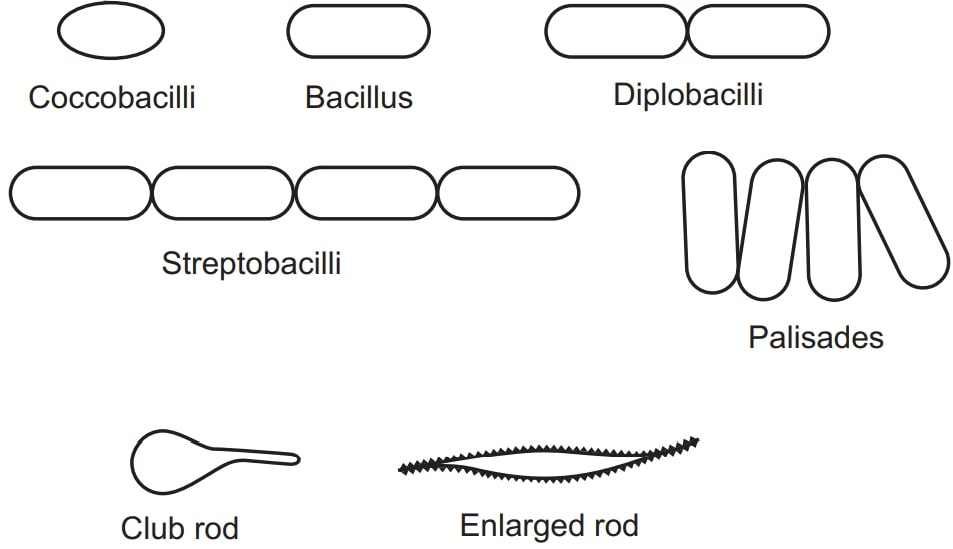
2. Actinomycetes:
They are rigid organisms but look like fungi. They exhibit branching and tend to form filaments. They are Gram-positive, but several species have complex cell wall structures that make the Gram staining unsuitable (e.g. Mycobacteriaceae). They are widely distributed in soil, compost, etc. They are heterotrophic, aerobic, and mesophilic organisms. Some organisms are thermophilic growing at more than 55°C like thermo-actinomycetes, streptomyces, etc. (Fig.3).
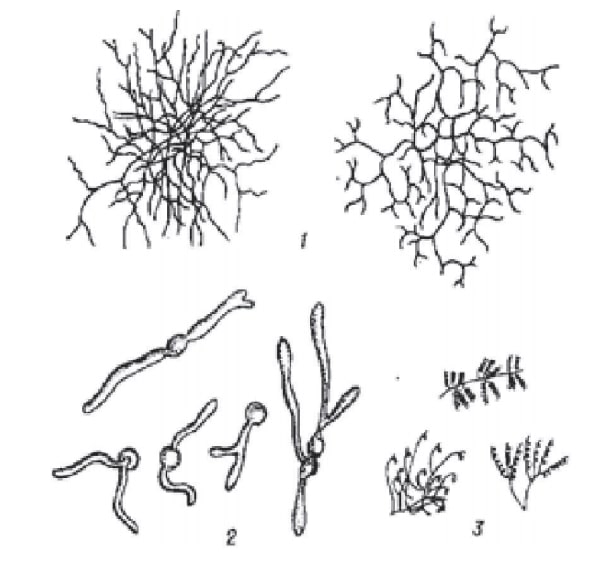
3. Spirochaetes:
They are double-membrane bacteria, most of which have long, non-branched, helically coiled cells. They are Gram-negative and are chemoheterotrophic in nature. The length varies between 3 and 500 µm and diameters around 0.09 to 3 µm. Most spirochaetes are free-living and anaerobic. Example: Leptospira interrogans (Fig.4).
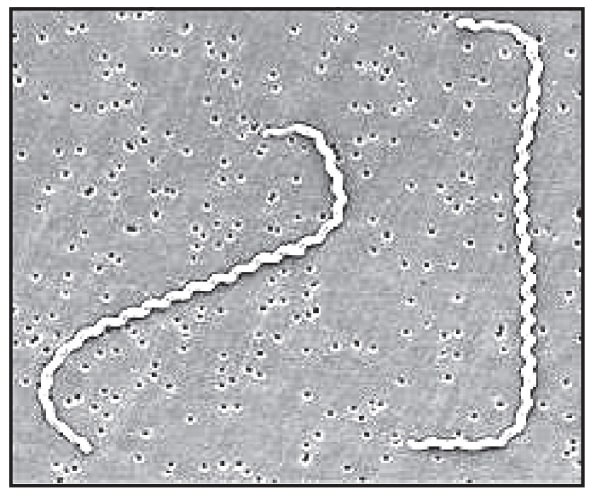
4. Mycoplasmas:
They are the smallest bacterial cell and not having a rigid cell wall. They are indefinite shape and highly pleomorphic (alter their shape or size in response to environmental conditions) in nature. They can be parasitic or saprotrophic. Several species of mycoplasmas are pathogenic in humans. Like Mycoplasma pneumonia which causes pneumonia and other respiratory disorders. M. genitalium which involves in pelvic inflammatory diseases (Fig.5).
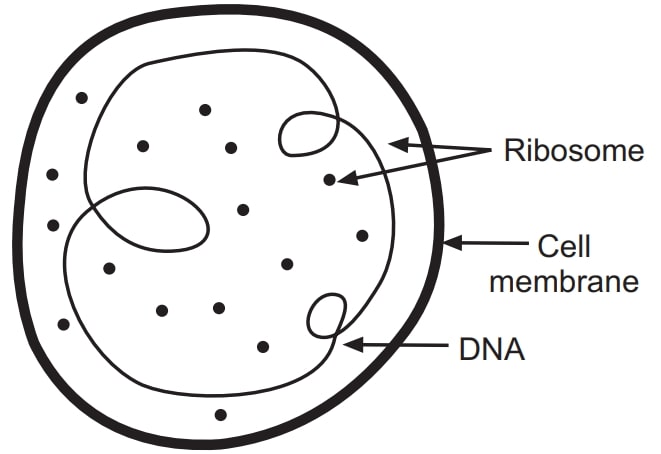
5. Rickettsia:
They are non-motile, Gram-negative, non-spore-forming, small intracellular, and pleomorphic bacteria. They are also present as cocci (0.1 µm in diameter), rods (1-4 µm long), or thread-like (10 µm long) forms. Rickettsia species are the pathogens responsible for typhus, rickettsialpox, Boutonneuse fever and are susceptible to antibiotics of the tetracycline group. Examples: Rickettsia conorii, Rickettsia typhi, etc. (Fig.6).
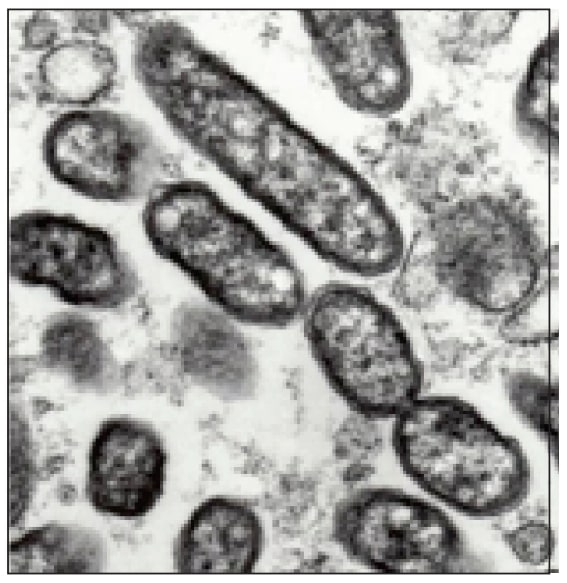
6. Chlamydiae:
They are ovoid and Gram-negative bacteria. Their cell wall is consisting of peptidoglycan and other proteins. They are very small, obligate intracellular parasites. They multiply in the cytoplasm of their host cell by a distinctive developmental cycle. They commonly infect humans are eye disease, pneumonia, psittacosis, etc. Examples: Chlamydia trachomatis (causes trachoma eye disease), Chlamydophila pneumonia (causes pneumonia), Chlamydophila psittaci (causes psittacosis), etc. (Fig.7).
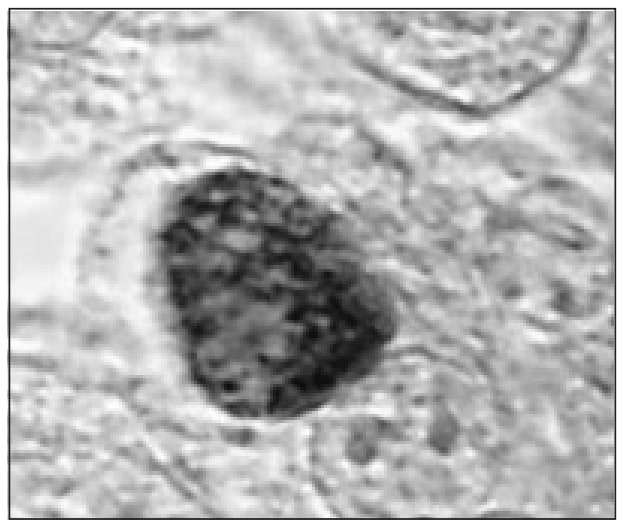
Make sure you also check our other amazing Article on : Ultra Structure of Bacteria